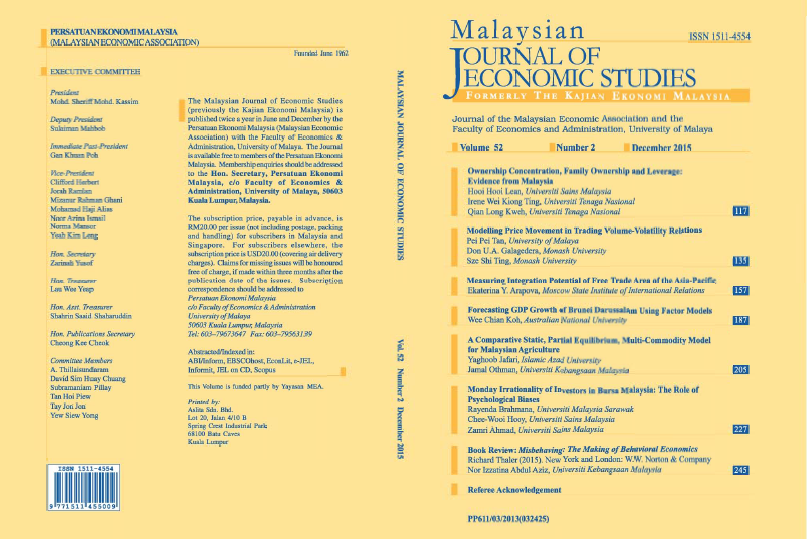Measuring Integration Potential of Free Trade Area of the Asia-Pacific
Keywords:
APEC, Free Trade Area of the Asia-Pacific, hierarchical cluster analysis, regional economic integration, trade liberalisationAbstract
At the 2014 APEC summit, the participating countries agreed to move towards a region-wide economic integration, and approved the China-backed roadmap to promote the Free Trade Area of the Asia-Pacific (FTAAP). The paper examines prospects for economic integration in the Asia-Pacific in the framework of the 21 APEC participating members. It aims to measure the 'integration potential' of the FTAAP on the basis of quantitative and qualitative analysis of the actual data available and to explore key obstacles hampering economic integration in the region. The research originates from the theory of convergence and concept of proximity, that supposes that the higher the degree of homogeneity in economic development and regulatory regimes of the integrating countries, the higher their 'integration potential'. Initial estimates of the FTAAP prospects were based on merchandise trade complementarity indices and coefficients of variation analysis. The study uses hierarchical cluster analysis which helps to classify countries in different groups according to similarity of their economic typologies. This approach also reveals the favourable algorithm of regional economic integration in the framework of the ‘hybrid approach’, which allows the countries to enter into free trade agreements on a bilateral basis of make offers to the APEC membership as a whole.

